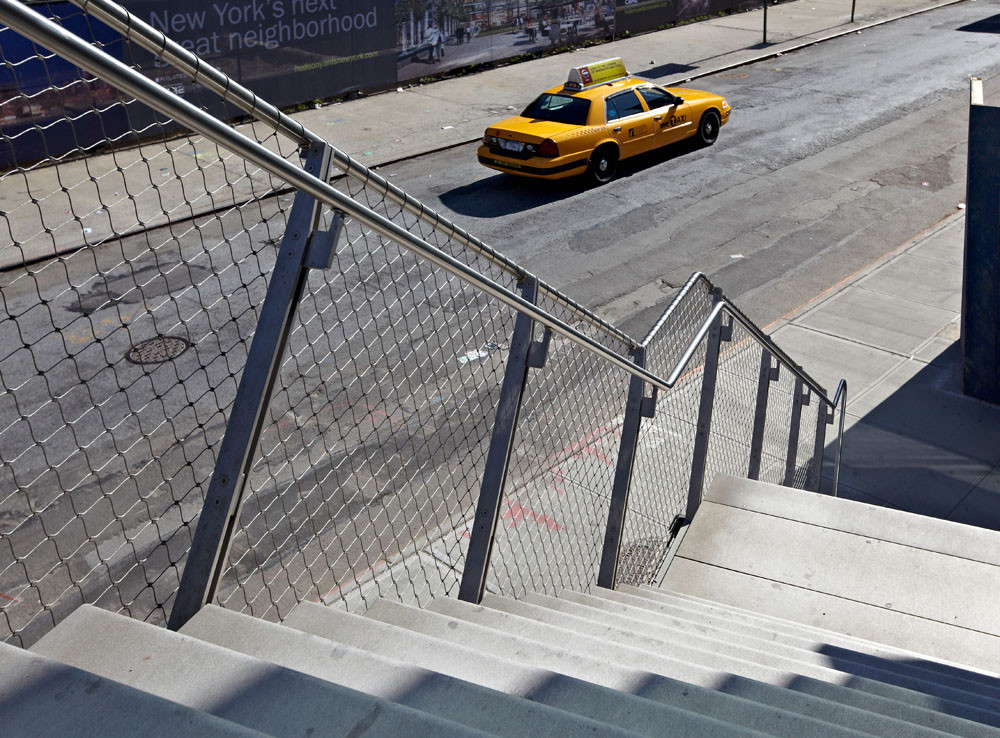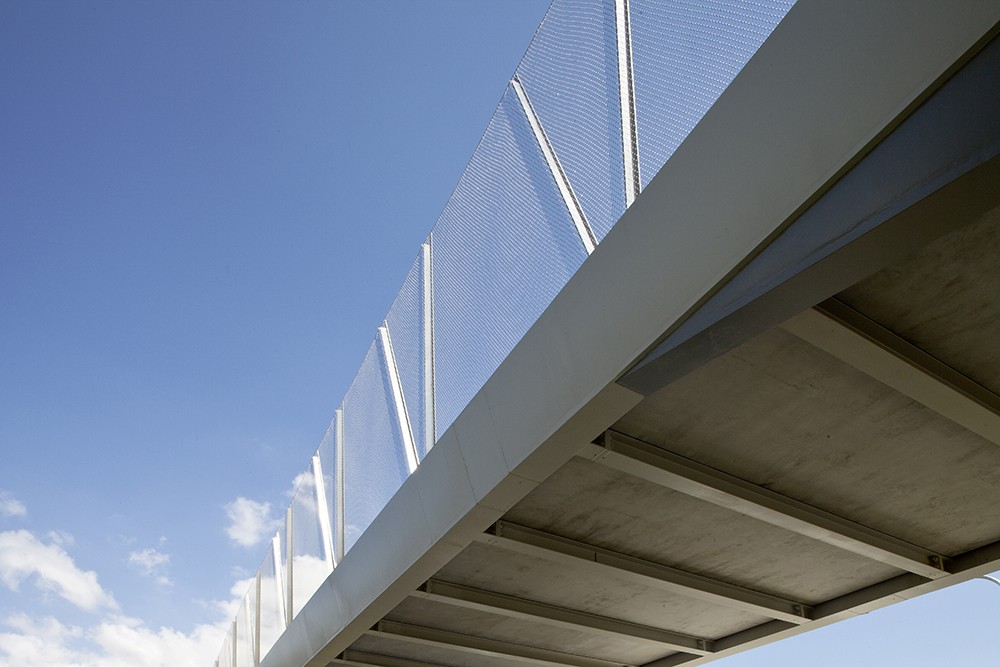As well as providing great support structures for building facades, Webnet mesh is an ideal material for creating safety barriers and screens.
Some typical applications for security and protection include barriers on bridges, balconies, walkways and lookouts, screens on no-entry areas, fences around properties, and safety nets for playgrounds, public monuments and various other structures.
There are several reasons you might choose Webnet for these types of projects, from both a functional and design point of view.
Here are some examples.
Functional, practical aspects of Webnet mesh
- Strength and durability – Jakob’s Webnet is made from genuine marine-grade stainless steel wire, which makes it resistant to weather, UV and rusting.
- Longevity – barriers made from Webnet can last up to 25 years, depending on the installation.
- Maintenance – Webnet has very low requirements for ongoing maintenance.
- Visibility and ventilation – Webnet is light and transparent, allowing for excellent natural light entry and airflow.
- Versatility – the mesh comes in a range of aperture-opening sizes and is fully customisable.
- Safety codes and standards – Webnet meets all Australian standards and safety codes for security and protection screening.
- Easy to install – Webnet does not require a sub-frame and is very easy to install, which can save time and money on projects.
Architectural / design perspective
- Profile – the material has a very light profile that gives it a translucent and unobtrusive appearance. This also means it can provide safety and security without detracting from the intent of the design.
- Customisation – Webnet has very high customisation capabilities in terms of size, shape, form, and colour. There is also a sleeveless variety of Webnet that offers even greater transparency.
- Integration – while architects may find integrating Webnet into existing solid structures somewhat challenging. But with the right expertise and engineering Webnet can be fully integrated, making it great for retrofit projects.
How Webnet compares
Webnet compares very favourably to other materials that might be utilised for security and protection.
For example, chainlink – while lower in cost and also easy to install – performs fairly poorly when it comes to longevity, durability, strength and security compared to Webnet. It also has high maintenance requirements.
Another example is perforated panelling. While this material can be good for security and has excellent durability, it offers lower transparency and ventilation than Webnet. It can also become very costly when it comes to customisation.
Some other low maintenance options include Weldmesh and Kaynemaile mesh. However, both of these materials lack Webnet’s transparency and translucent appearance and excellent capacity for customisation.
Case examples: real-world Webnet solutions
Fencing / railing:
Webnet provided a very effective protection solution for the High Line in New York – an old disused elevated railway that was transformed into a public park. It was also used to create staircase balustrades to and from the park in place of traditional-style railings.

Space separation:
Webnet was used to great effect at the Dee Why Police Citizens Youth Club to section off the ball courts – creating a barrier that is robust and impenetrable while being light, airy and almost invisible.
Safety barriers for fall protection:
Webnet makes great safety barriers for elevated structures such as bridges and elevated carparks, examples including the Albert Cotter pedestrian bridge and the Thomas Street Dandenong car park. While both these projects were very different in their requirements, Webnet was able to provide a bespoke solution in each case.

Find out more
If you have a project in mind that requires a protection and security screen that is robust, long-lasting and attractive in finish, please feel free to get in touch.






































